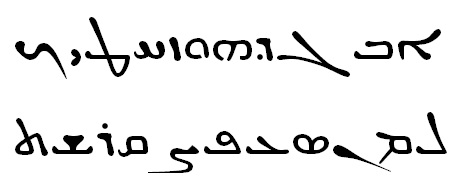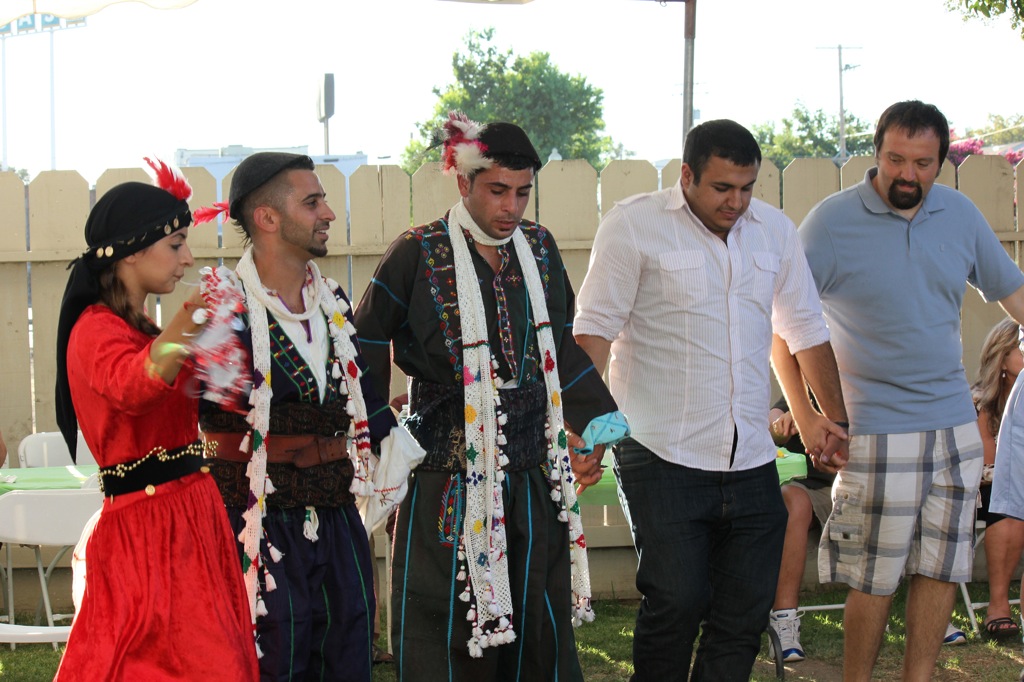|
Assyrians In Iraq
Iraqi Assyrians (, , ) are an ethnic and linguistic minority group, indigenous to Upper Mesopotamia. They are defined as Assyrians residing in the country of Iraq, or members of the Assyrian diaspora who are of Iraqi-Assyrian heritage. They share a common history and ethnic identity, rooted in shared linguistic, cultural and religious traditions, with Assyrians in Iran, Turkey and Syria, as well as with the Assyrian diaspora elsewhere. A significant number have emigrated to the United States, notably to the DetroitArab, Chaldean, and Middle Eastern Children and Families in the Tri-County Area " [...More Info...] [...Related Items...] OR: [Wikipedia] [Google] [Baidu] |
Assyrian New Year
''Kha b-Nisan'', ''Ha b-Nisin'', or ''Ha b-Nison'' (, " First of April"), also known as ''Resha d-Sheta'' (, "Head of the year"), ''Akitu'' (ܐܟܝܬܘ), or Assyrian New Year, is the spring festival among the indigenous Assyrians of northern Iraq, northeastern Syria, southeastern Turkey and northwestern Iran, celebrated on the first day of April. The festival has its roots in the ancient Mesopotamian religion and its festival of Akitu, which were practiced by Assyrians until the faith's gradual demise in the face of Syriac Christianity between the 1st and 4th centuries AD. Today, Assyrians are predominantly Christian, with most being adherents of the Assyrian Church of the East, Chaldean Catholic Church, Syriac Orthodox Church, Syriac Catholic Church, Ancient Church of the East, Assyrian Pentecostal Church and Assyrian Evangelical Church. Celebrations involve parades and parties. Some Assyrians wear traditional costumes and dance for hours. Celebrations take place throughout A ... [...More Info...] [...Related Items...] OR: [Wikipedia] [Google] [Baidu] |
Christianity
Christianity is an Abrahamic monotheistic religion, which states that Jesus in Christianity, Jesus is the Son of God (Christianity), Son of God and Resurrection of Jesus, rose from the dead after his Crucifixion of Jesus, crucifixion, whose coming as the Messiah#Christianity, messiah (Christ (title), Christ) was Old Testament messianic prophecies quoted in the New Testament, prophesied in the Old Testament and chronicled in the New Testament. It is the Major religious groups, world's largest and most widespread religion with over 2.3 billion followers, comprising around 28.8% of the world population. Its adherents, known as Christians, are estimated to make up a majority of the population in Christianity by country, 157 countries and territories. Christianity remains Christian culture, culturally diverse in its Western Christianity, Western and Eastern Christianity, Eastern branches, and doctrinally diverse concerning Justification (theology), justification and the natur ... [...More Info...] [...Related Items...] OR: [Wikipedia] [Google] [Baidu] |
Syriac Language
The Syriac language ( ; ), also known natively in its spoken form in early Syriac literature as Edessan (), the Mesopotamian language () and Aramaic (), is an Aramaic#Eastern Middle Aramaic, Eastern Middle Aramaic dialect. Classical Syriac is the academic term used to refer to the dialect's literary usage and standardization, distinguishing it from other Aramaic dialects also known as 'Syriac' or 'Syrian'. In its West-Syriac Rite, West-Syriac tradition, Classical Syriac is often known as () or simply , or , while in its East-Syriac Rite, East-Syriac tradition, it is known as () or (). It emerged during the first century AD from a local Eastern Aramaic languages, Eastern Aramaic dialect that was spoken in the ancient region of Osroene, centered in the city of Edessa. During the Early Christian period, it became the main literary language of various Aramaic-speaking Christian communities in the historical region of Syria (region), Ancient Syria and throughout the Near East. As ... [...More Info...] [...Related Items...] OR: [Wikipedia] [Google] [Baidu] |
Assyrian Identity
Assyrian nationalism is a movement of the Assyrian people that advocates for independence or autonomy within the regions they inhabit in northern Iraq, northeastern Syria, northwestern Iran, and southeastern Turkey. Assyrian nationalists claim descent from those who established the Mesopotamian Assyrian civilization and empire which was centered in Ashur, modern day Iraq, which at its height, covered the Levant and Egypt, as well as portions of Anatolia, Arabia and modern-day Iran, Armenia, and Azerbaijan. The empire lasted from perhaps as early as the 25th century BC until its collapse around 7th century BC. The movement emerged in the late 19th century in a climate of increasing ethnic and religious persecution of the Assyrians in the Ottoman Empire, and is today commonly espoused by Assyrians in the Assyrian diaspora and Assyrian homeland. The Unrepresented Nations and Peoples Organization (UNPO) recognizes Assyrians as an indigenous people of northern Iraq, southeaster ... [...More Info...] [...Related Items...] OR: [Wikipedia] [Google] [Baidu] |
Assyrian Diaspora
The Assyrian diaspora ( Syriac: ܓܠܘܬܐ, ''Galuta'', "exile") refers to ethnic Assyrians living in communities outside their ancestral homeland. The Eastern Aramaic-speaking Assyrians claim descent from the ancient Assyrians and are one of the few ancient Semitic ethnicities in the Near East who resisted Arabization, Turkification, Persianization and Islamization during and after the Muslim conquest of Iraq, Iran, Syria and Turkey. The indigenous Assyrian homeland is within the borders of northern Iraq, southeastern Turkey, northwestern Iran, and northeastern Syria, a region roughly corresponding with Assyria from the 25th century BC to the 7th century AD. Assyrians are predominantly Christians; most are members of the Assyrian Church of the East, the Ancient Church of the East, the Chaldean Catholic Church, the Syriac Orthodox Church, the Syriac Catholic Church, the Assyrian Pentecostal Church and the Assyrian Evangelical Church. The terms "Syriac", "Chaldean" and ... [...More Info...] [...Related Items...] OR: [Wikipedia] [Google] [Baidu] |
Assyrian People
Assyrians (, ) are an ethnic group Indigenous peoples, indigenous to Mesopotamia, a geographical region in West Asia. Modern Assyrians Assyrian continuity, share descent directly from the ancient Assyrians, one of the key civilizations of Mesopotamia. While they are distinct from other Mesopotamian groups, such as the Babylonians, they share in the broader cultural heritage of the Mesopotamian region. Modern Assyrians may culturally self-identify as Terms for Syriac Christians#Syriac identity, Syriacs, Chaldean Catholics, Chaldeans, or Terms for Syriac Christians#Aramean identity, Arameans for religious, geographic, and tribal identification. Assyrians speak various dialects of Neo-Aramaic, specifically those known as Suret and Turoyo, which are among the oldest continuously spoken and written languages in the world. Aramaic was the lingua franca of West Asia for centuries and was the language spoken by historical Jesus, Jesus. It has influenced other languages such as Hebrew an ... [...More Info...] [...Related Items...] OR: [Wikipedia] [Google] [Baidu] |
Upper Mesopotamia
Upper Mesopotamia constitutes the Upland and lowland, uplands and great outwash plain of northwestern Iraq, northeastern Syria and southeastern Turkey, in the northern Middle East. Since the early Muslim conquests of the mid-7th century, the region has been known by the traditional Arabic name of ''al-Jazira'' ( "the island", also transliterated ''Djazirah'', ''Djezirah'', ''Jazirah'') and the Syriac language, Syriac variant ''Gāzartā'' or ''Gozarto'' (). The Euphrates and Tigris rivers transform Mesopotamia into almost an island, as they are joined together at the Shatt al-Arab in the Basra Governorate of Iraq, and their sources in eastern Turkey are in close proximity. The region extends south from the mountains of Anatolia, east from the hills on the left bank of the Euphrates river, west from the mountains on the right bank of the Tigris river and includes the Sinjar plain. It extends down the Tigris to Samarra and down the Euphrates to Hit, Iraq. The Khabur (Euphrates), Khab ... [...More Info...] [...Related Items...] OR: [Wikipedia] [Google] [Baidu] |
Indigenous Peoples
There is no generally accepted definition of Indigenous peoples, although in the 21st century the focus has been on self-identification, cultural difference from other groups in a state, a special relationship with their traditional territory, and an experience of subjugation and discrimination under a dominant cultural model. Estimates of the population of Indigenous peoples range from 250 million to 600 million. There are some 5,000 distinct Indigenous peoples spread across every inhabited climate zone and inhabited continent of the world. Most Indigenous peoples are in a minority in the state or traditional territory they inhabit and have experienced domination by other groups, especially non-Indigenous peoples. Although many Indigenous peoples have experienced colonization by settlers from European nations, Indigenous identity is not determined by Western colonization. The rights of Indigenous peoples are outlined in national legislation, treaties and international law ... [...More Info...] [...Related Items...] OR: [Wikipedia] [Google] [Baidu] |
Minority Group
The term "minority group" has different meanings, depending on the context. According to common usage, it can be defined simply as a group in society with the least number of individuals, or less than half of a population. Usually a minority group is disempowered relative to the majority, and that characteristic lends itself to different applications of the term minority. In terms of sociology, economics, and politics, a demographic that takes up the smallest fraction of the population is not necessarily labelled the "minority" if it wields dominant power. In the academic context, the terms "minority" and "majority" are used in terms of hierarchical power structures. For example, in South Africa, during Apartheid, white Europeans held virtually all social, economic, and political power over black Africans. For this reason, black Africans are the "minority group", despite the fact that they outnumber white Europeans in South Africa. This is why academics more frequently use ... [...More Info...] [...Related Items...] OR: [Wikipedia] [Google] [Baidu] |
Ethnic
An ethnicity or ethnic group is a group of people with shared attributes, which they collectively believe to have, and long-term endogamy. Ethnicities share attributes like language, culture, common sets of ancestry, traditions, society, religion, history or social treatment. Ethnicities may also have a narrow or broad spectrum of genetic ancestry, with some groups having mixed genetic ancestry. ''Ethnicity'' is sometimes used interchangeably with ''nation'', particularly in cases of ethnic nationalism. It is also used interchangeably with '' race'' although not all ethnicities identify as racial groups. By way of assimilation, acculturation, amalgamation, language shift, intermarriage, adoption and religious conversion, individuals or groups may over time shift from one ethnic group to another. Ethnic groups may be divided into subgroups or tribes, which over time may become separate ethnic groups themselves due to endogamy or physical isolation from the parent gro ... [...More Info...] [...Related Items...] OR: [Wikipedia] [Google] [Baidu] |
Armenians
Armenians (, ) are an ethnic group indigenous to the Armenian highlands of West Asia.Robert Hewsen, Hewsen, Robert H. "The Geography of Armenia" in ''The Armenian People From Ancient to Modern Times Volume I: The Dynastic Periods: From Antiquity to the Fourteenth Century''. Richard G. Hovannisian (ed.) New York: St. Martin's Press, 1997, pp. 1–17 Armenians constitute the main demographic group in Armenia and constituted the main population of the breakaway Republic of Artsakh until their Flight of Nagorno-Karabakh Armenians, subsequent flight due to the 2023 Azerbaijani offensive in Nagorno-Karabakh, 2023 Azerbaijani offensive. There is a large Armenian diaspora, diaspora of around five million people of Armenian ancestry living outside the Republic of Armenia. The largest Armenian populations exist in Armenians in Russia, Russia, the Armenian Americans, United States, Armenians in France, France, Armenians in Georgia, Georgia, Iranian Armenians, Iran, Armenians in Germany, ... [...More Info...] [...Related Items...] OR: [Wikipedia] [Google] [Baidu] |
Mandaeans
Mandaeans (Mandaic language, Mandaic: ࡌࡀࡍࡃࡀࡉࡉࡀ) ( ), also known as Mandaean Sabians ( ) or simply as Sabians ( ), are an ethnoreligious group who are followers of Mandaeism. They believe that John the Baptist was the final and most important prophet. They may have been among the earliest religious groups to practice baptism, as well as among the earliest adherents of Gnosticism, a belief system of which they are the last surviving representatives today. The Mandaeans were originally native speakers of Mandaic language, Mandaic, an Eastern Aramaic languages, Eastern Aramaic language, before they nearly all switched to Mesopotamian Arabic or Persian language, Persian as their main language. After 2003 invasion of Iraq, the invasion of Iraq by the United States and Multi-National Force – Iraq, its allies in 2003, the Mandaean community of Iraq, which before the war numbered 60,000–70,000 persons, collapsed with most of the community relocating to Iran, Syria ... [...More Info...] [...Related Items...] OR: [Wikipedia] [Google] [Baidu] |









